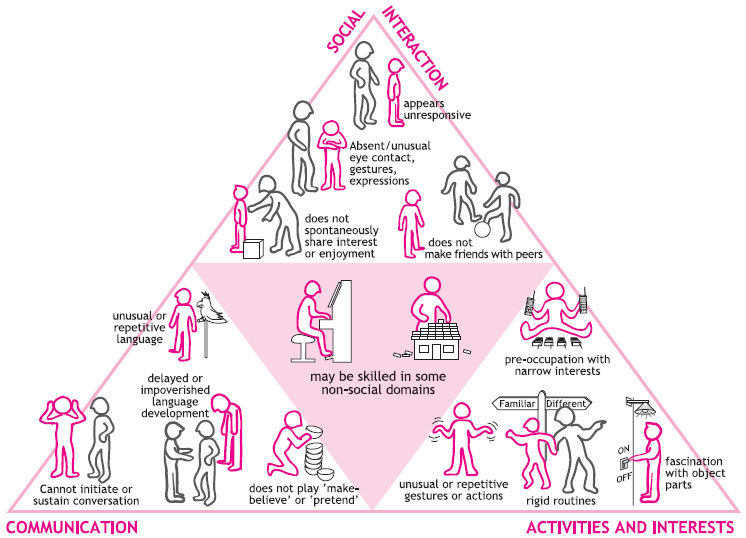The early diagnosis of autism significantly determines how effective subsequent intervention will be. Children with ASD who receive treatment while the brain is most adaptable show the greatest improvement. Even if a diagnosis is made in adolescence or adulthood, however, intervention may still be helpful due to the brain’s continued plasticity.
Evidence over the last 15 years indicates that intensive early intervention—ideally in an optimal educational setting, and for at least two years–during the preschool years results in improved outcomes in most young children with ASD.
There are basically three areas of observable symptoms that characterize ASDs:
- Impairment of social relationships
- Social communication
- Imaginative thought
Some of the symptoms may be mild, others more obvious. It is the severity of these symptoms that leads to concerns on the part of the parents or the professional.
It is very important to make a detailed evaluation in order to make the correct diagnosis. That is why all aspects such as communication, language and motor skills, school performance, speech irregularities and general thinking abilities should be taken into consideration.
 INTERNATIONAL CHILD DEVELOPMENT CENTER “They may forget what you said but they will never forget how you made them feel” Carol Buchner
INTERNATIONAL CHILD DEVELOPMENT CENTER “They may forget what you said but they will never forget how you made them feel” Carol Buchner
